I’m sure you have heard of guided notes. I used to love them. I used binders with guided notes for my first few years of teaching and then switched over to composition notebooks, which I liked so much better. But I don’t use guided notes anymore. I use “To My Future Forgetful Self” notes, and I will never go back. Keep reading to get all of the details and understand the reasons why it has changed my classroom.
Where The Idea Came From
I first heard about the idea of To My Future Forgetful Self notes when I was reading the book “Building Thinking Classrooms.” It is a fantastic book, and if you have not read it yet, I suggest you do immediately. I wanted to use almost all of the ideas in there, but picked a few to start with. To My Future Forgetful Self notes was one idea that I started immediately. It changed my classroom.
What Is It?
To My Future Forgetful Self is a notebook that each of my students have. It has replaced guided notes in my classroom. It is a way for students to keep track of big ideas, standards, and vocabulary. But the best part is that the students have almost full control!
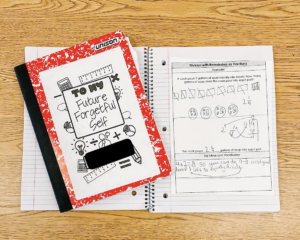
What is Included?
The worksheet consists of three important details: the title, the examples, and the big ideas and vocabulary. The title is simple and concise and tells them what this page is. This will help them later when they are looking back through their notebook. Examples would be “Adding Mixed Numbers” or “Finding the Percent of a Number.” The next section is examples. Depending on the topic, I include anywhere from one to five examples. The eventual goal is that students come up with their own examples, but we did not get to that this year. The final section is “Big Ideas and Vocabulary.” This is the most open ended section, and often times the most helpful for students.
How Do You Use It?
When we finish learning a topic, I put “Future Forgetful Self” as a Must Do activity on their math menu. They get it like they would get any other Must Do item. They work together on it as a group, like their other menu items. The key is that when they are solving the examples, they can show as much or as little work as their future forgetful self needs. This is a huge skill! Knowing yourself well enough that you can show just the right amount of work. They get very good at this as the year goes on.
Once the whole group has finished solving the answers together, they check them. Last year all I did was write the answers on the board and put a sticky note on top of them. One student from each group would go up and check the answers. Then they would move on to the final section of big ideas and vocabulary. We did this section together as a class through October. It was important for students to see all of the different things they could write there! It could be a step by step process, one key element that they think their future forgetful self would need, a diagram, a list of vocabulary words, or anything else that their future forgetful self would find helpful! The goal is for students to talk through this section with each other in their groups, but they could write what wold be the most helpful for them.
Is It More Helpful Than Guided Notes?
In my opinion, absolutely. Here are some reasons why:
–It is much less overwhelming for students to actually use. When a student is stuck and looking in their notebook, instead of looking through days or weeks or months worth of guided notes, they are looking through a few pages whose topic is clearly on the top.
–Students are more likely to use them when they need help. Because students have way more control over what goes in this, I have seen they are way more likely to actually use their notebooks, which is one of the main reasons why teachers have students keep guided notes. I use math menus, so skills are continuously spiraled. If they forget how to do something, this is the first place they look.
–Students learn from each other. The discussion in their small groups when they are solving the examples and writing the big ideas and vocabulary is awesome. Even if they do not write down something someone else wrote, they still heard their idea.
–It frees them up to listen, participate, and understand during the lessons with me. With guided notes, students need to follow along to fill in the blanks and keep up with the teacher. Most often, students are spending most of their energy doing just that: keeping up. Not actually participating. We use mini white boards on the rug so students have freedom to participate in a way that supports them, not just trying to keep up with the notes. Then when it comes to writing notes for their future forgetful selves, they are in control.
There are a ton of ways to To My Future Forgetful Self notes in your classroom. This is what worked for my students last year, and I plan on continuing using them for as long as I am in the classroom! If this is something you are interested in, there are two things you can do: Click for some Future Forgetful Self Examples to download some of my 5th and 6th grade examples that you can use to edit and create your own! Then email me at mathwithmsmatherson@gmail.com with any questions you have before you start implementing this in your own classroom!

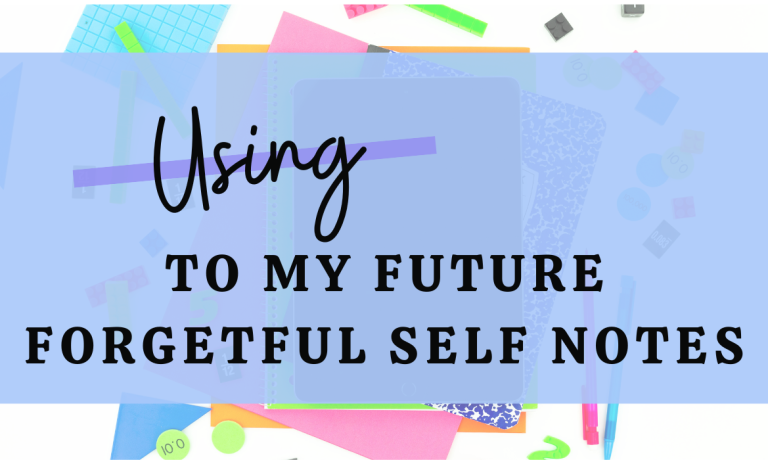
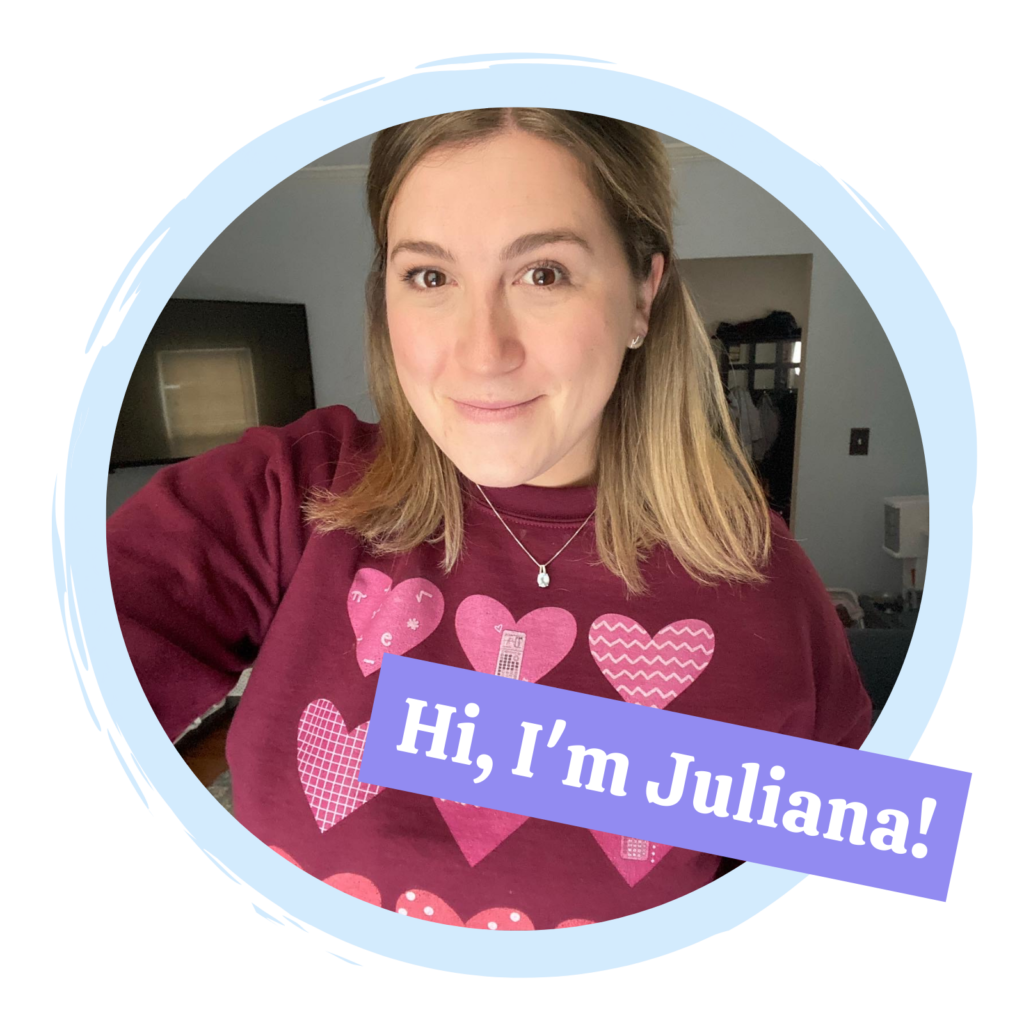
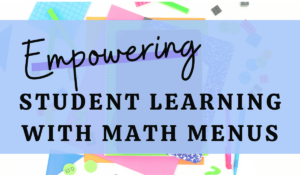
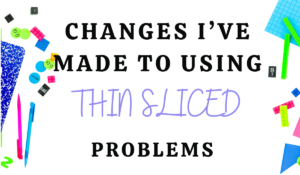
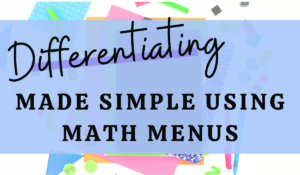
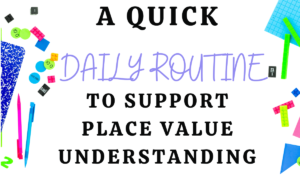
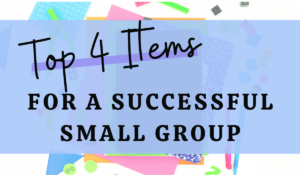

11 thoughts on “Using To My Future Forgetful Self Notes”
Wondering if you have a high school algebra section?
I do not, sorry!
I am in awe of all that you do and am learning so much from your blog. Do you have a template that you would be willing to share? I teach 4th grade and think this is something I might want to add to my lessons next year.
Thank you for the kind words! If you send me an email at mathwithmsmatherson@gmail.com I can send you a PPT version of what I use that you can edit.
You mentioned you have this on their menu after finishing a topic. Can you explain that further? How many of these are they completing per week? Thank you so much for all your ideas and content!
Great question! It totally depends. For example, we might start multiplying fractions on a Monday, and spend Monday exploring it with manipulatives, Tuesday drawing pictures, and Wednesday connecting the pictures to how we can just multiply the numerators and denominators. In this case, I would put “Future Forgetful Self” for multiplying fractions on Thursday, and students can use whichever method they want. There are other standards that take longer, and some that are shorter.
I absolutely love this idea and would like to incorporate it in my classroom this year. Do you have a digital copy of your notebook cover? Also, have you thought about putting your “forgetful notes” up in your TPT store?
Yes, the cover is free in my TPT store! I have thought about it, but wanted to give it some more time to perfect them before I put them up.
My building has blocked TPT and I am wondering if you have grade 6 math notes to future self. We are implementing BTC in our 6th grade math class and I am a co-teacher. I am finding it very hard for my kids to take notes. I’ve tried some guided, but nothing seems to stick.
Hi! I do not sell them currently. But if you click on the link towards the bottom of this blog post there is a link to some that you can use. And it is also editable so that you can make your own versions for each standard.